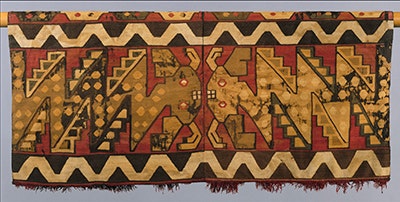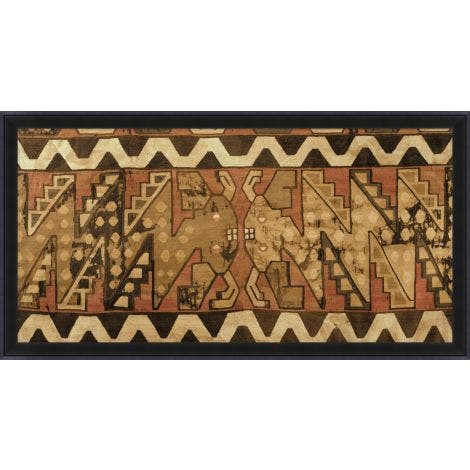Local Storage seems to be disabled in your browser.
For the best experience on our site, be sure to turn on Local Storage in your browser.
Grand Wari Fabric

Our Inspiration:Tunic with Confronting Catfish
Peru, Nasca-Wari
Camelid hair, tapestry weave; 800–850 A.D.
Gift of George D. Pratt, 1929 29.146.23
The primary items of clothing for men in ancient Peru were tunics. Considerable effort and time were invested in making these elaborate garments since, in addition to being practical, they were statements of ethnic affiliation, social status, and religious beliefs. This example’s main pattern consists of two catfish facing each other. Their large heads have bicolored eyes, bared teeth, barbels, and fins. While the shape and weaving technique have Nasca characteristics, the rendering of the eyes in two halves indicates the Wari style. This suggests that the tunic was woven in the Nasca area when this region was influenced by the Wari state.

Our Inspiration:Tunic with Confronting Catfish
Peru, Nasca-Wari
Camelid hair, tapestry weave; 800–850 A.D.
Gift of George D. Pratt, 1929 29.146.23
The primary items of clothing for men in ancient Peru were tunics. Considerable effort and time were invested in making these elaborate garments since, in addition to being practical, they were statements of ethnic affiliation, social status, and religious beliefs. This example’s main pattern consists of two catfish facing each other. Their large heads have bicolored eyes, bared teeth, barbels, and fins. While the shape and weaving technique have Nasca characteristics, the rendering of the eyes in two halves indicates the Wari style. This suggests that the tunic was woven in the Nasca area when this region was influenced by the Wari state.


